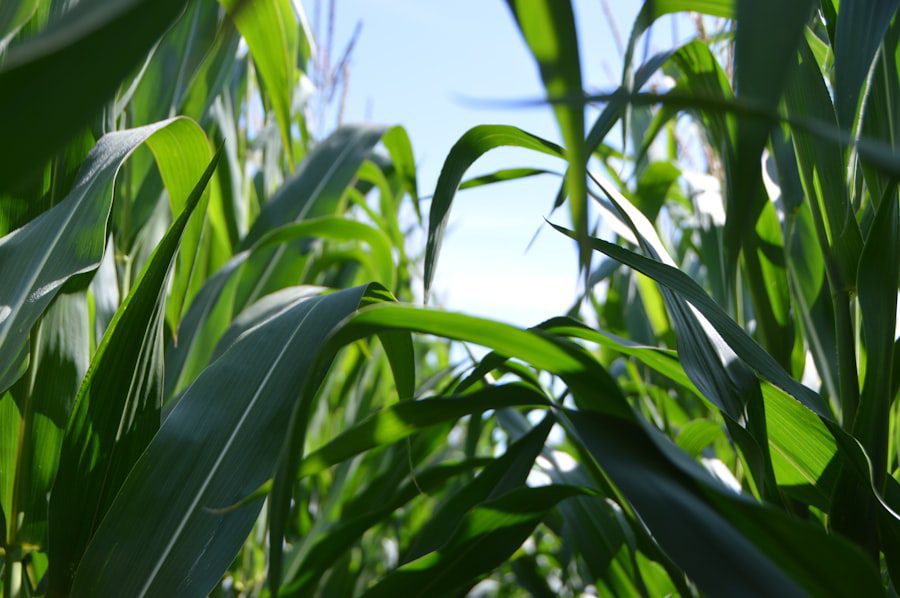Starches are complex carbohydrates that serve as a primary energy source for many organisms, including humans. Chemically, they are polysaccharides composed of long chains of glucose molecules linked together by glycosidic bonds. Starch is predominantly found in plants, where it acts as a means of energy storage.
When plants photosynthesize, they convert sunlight into chemical energy, which is then stored in the form of starch in various parts of the plant, such as roots, tubers, seeds, and fruits. Common sources of starch include potatoes, rice, corn, wheat, and legumes. In the human diet, starches are broken down into glucose through the digestive process, providing a readily available source of energy.
This conversion begins in the mouth with the enzyme amylase found in saliva and continues in the small intestine. The significance of starches extends beyond mere energy provision; they also play a role in digestive health. Resistant starches, for instance, are not fully digested in the small intestine and can act as prebiotics, promoting the growth of beneficial gut bacteria.
This multifaceted role of starches makes them an essential component of a balanced diet.
Key Takeaways
- Starches are complex carbohydrates found in foods like potatoes, rice, and bread.
- There are two main types of starches: amylose and amylopectin, which have different properties when cooked.
- Starches play a crucial role in thickening, binding, and adding texture to dishes in cooking.
- Cooking with starches involves techniques like boiling, steaming, and frying to achieve different textures and flavors.
- Different cuisines use starches in various ways, such as using rice in Asian dishes and potatoes in Western cuisine.
Types of Starches
Starches can be broadly categorized into two main types: amylose and amylopectin. Amylose is a linear polymer of glucose units connected by α(1→4) glycosidic bonds, while amylopectin is a branched polymer with both α(1→4) and α(1→6) linkages. The ratio of these two components influences the properties of starches significantly.
For example, high-amylose starches tend to form gels and have a higher resistance to digestion, making them beneficial for blood sugar control. In contrast, high-amylopectin starches are more easily digestible and are often used in food products for their thickening properties. Another classification of starches is based on their source and functional properties.
For instance, waxy starches, derived from certain varieties of corn or rice, contain nearly 100% amylopectin and are prized for their ability to create smooth textures in sauces and gravies. Modified starches are chemically or physically altered to enhance their performance in food applications; they may be used to improve stability, texture, or shelf life. Understanding these different types of starches is crucial for food scientists and chefs alike, as it allows them to select the appropriate starch for specific culinary applications.
The Role of Starches in Cooking

In cooking, starches serve multiple functions that enhance both the texture and flavor of dishes. One of their primary roles is as a thickening agent. When heated in a liquid, starch granules absorb water and swell, leading to a thickening effect that is essential in sauces, soups, and gravies.
This process is known as gelatinization and typically occurs at temperatures between 60°C to 80°C (140°F to 176°F). The ability of starches to thicken liquids makes them indispensable in many culinary traditions. Moreover, starches contribute to the structure and mouthfeel of various foods.
In baking, for example, starches provide the necessary framework for bread and pastries. When flour is mixed with water and kneaded, the gluten proteins develop a network that traps air bubbles during fermentation. Starch granules also gelatinize during baking, contributing to the final texture of the product.
This interplay between starches and proteins is crucial for achieving desirable qualities in baked goods, such as lightness and chewiness.
How to Cook with Starches
| Starch | Cooking Method | Cooking Time |
|---|---|---|
| Potatoes | Boiling | 15-20 minutes |
| Rice | Simmering | 15-20 minutes |
| Pasta | Boiling | 8-12 minutes |
| Cornstarch | Mix with cold water, then add to hot liquid | 2-3 minutes |
Cooking with starches requires an understanding of their properties and how they interact with other ingredients. When using starch as a thickening agent, it is essential to create a slurry by mixing the starch with a cold liquid before adding it to hot mixtures. This prevents clumping and ensures even distribution throughout the dish.
For instance, when preparing a cornstarch-based sauce, combining cornstarch with cold water before incorporating it into a simmering broth allows for a smooth texture without lumps. Timing is also critical when cooking with starches. Overheating can lead to breakdown or retrogradation of starch molecules, resulting in undesirable textures.
For example, if a sauce thickened with cornstarch is boiled for too long after adding the slurry, it may become thin again as the starch loses its thickening power. Therefore, it is advisable to add the starch slurry towards the end of cooking and allow it to heat just enough to achieve the desired thickness without compromising its integrity.
Starches in Different Cuisines
Starches play a pivotal role across various global cuisines, each utilizing them in unique ways that reflect cultural preferences and cooking techniques. In Italian cuisine, pasta made from durum wheat semolina is a staple that showcases the versatility of starches. The cooking process involves boiling pasta until al dente, allowing the starches to gelatinize while maintaining a firm texture that holds sauces well.
Additionally, risotto exemplifies how rice starch can create creamy dishes through constant stirring and gradual addition of broth. In Asian cuisines, rice is often the primary source of starch. Different varieties of rice—such as jasmine, basmati, or sticky rice—offer distinct textures and flavors that influence dishes like sushi or fried rice.
In Chinese cooking, cornstarch is frequently used as a coating for meats before frying or as a thickener for sauces. The use of tapioca starch in desserts like bubble tea highlights how different types of starch can be employed creatively across culinary traditions.
Starch Alternatives

As dietary preferences evolve and health concerns arise, many individuals seek alternatives to traditional starch sources. One popular substitute is cauliflower rice, which involves grating or processing cauliflower into small granules that mimic the texture of rice while significantly reducing carbohydrate content. This alternative has gained traction among those following low-carb or ketogenic diets.
Another notable alternative is quinoa, which is often touted as a superfood due to its high protein content and complete amino acid profile. Unlike traditional grains that are primarily composed of starches, quinoa offers a more balanced nutritional profile while still providing a satisfying texture in salads or as a side dish. Other alternatives include legumes like lentils and chickpeas, which not only provide protein but also offer fiber and essential nutrients while serving as a hearty base for various dishes.
Starches in Baking
In baking, starches are fundamental to achieving desired textures and structures in products ranging from bread to pastries. Flour is primarily composed of starches and proteins; when combined with water and subjected to heat, these components undergo complex interactions that result in leavening and browning reactions. The gelatinization of starch during baking contributes to moisture retention and overall crumb structure.
Different types of flour contain varying amounts of starch and protein; for instance, all-purpose flour has moderate protein content suitable for a wide range of baked goods, while bread flour has higher protein levels that promote gluten development for chewier textures. Additionally, specialty flours like cake flour have lower protein content and finer texture, making them ideal for delicate cakes where tenderness is paramount. Understanding these distinctions allows bakers to select the appropriate flour for their specific recipes.
Starches in a Healthy Diet
Incorporating starches into a healthy diet can be beneficial when chosen wisely. Whole grains such as brown rice, quinoa, barley, and whole wheat products provide not only energy but also essential nutrients like fiber, vitamins, and minerals. Fiber-rich starches promote digestive health by aiding regularity and supporting gut microbiota diversity.
However, it is crucial to balance starch intake with other macronutrients such as proteins and healthy fats while being mindful of portion sizes. Refined starches found in white bread or sugary snacks can lead to rapid spikes in blood sugar levels; thus, opting for whole food sources can help maintain stable energy levels throughout the day. Additionally, incorporating resistant starches—found in foods like green bananas or cooked then cooled potatoes—can further enhance gut health by acting as prebiotics that nourish beneficial bacteria in the digestive system.
By understanding the diverse roles that starches play in cooking and nutrition, individuals can make informed choices that align with their dietary goals while enjoying the myriad flavors and textures that these versatile carbohydrates offer.
If you are interested in learning more about the benefits of using starches in industrial processes, you may want to check out the article Maximizing Efficiency with Coal Washing. This article discusses how starches can be used to improve the efficiency of coal washing processes. Additionally, you can explore more related topics on industrial processes and materials on the Almassiyah blog. Another interesting read is Discover the Charms of Briquettes New Orleans, which delves into the use of briquettes in various applications.
FAQs
What are starches?
Starches are complex carbohydrates found in many plant-based foods such as grains, legumes, and tubers. They are a major source of energy for the human body and are often used as thickeners in cooking.
What are some common starches in Spanish cuisine?
Some common starches used in Spanish cuisine include potatoes (patatas), rice (arroz), and various types of bread (pan). Other popular starches include legumes such as chickpeas (garbanzos) and lentils (lentejas).
How are starches used in Spanish cooking?
Starches are used in a variety of ways in Spanish cooking. They are often used as a base for dishes such as paella (made with rice), tortilla española (made with potatoes), and various types of bread and pastries.
Are there any traditional Spanish dishes that prominently feature starches?
Yes, there are several traditional Spanish dishes that prominently feature starches. Some examples include patatas bravas (fried potatoes served with a spicy tomato sauce), arroz con pollo (rice with chicken), and fabada asturiana (a hearty stew made with beans and sausage).
Are there any gluten-free starch options in Spanish cuisine?
Yes, there are several gluten-free starch options in Spanish cuisine. Some examples include rice, potatoes, corn, and various types of legumes such as chickpeas and lentils. These can be used as substitutes for gluten-containing grains in many traditional Spanish dishes.



